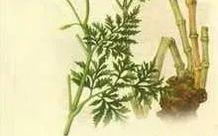Chuanxiong (Scientific name: Ligusticum chuanxiong hort) is a cultivated plant primarily produced in Sichuan (Guangxian), and also found in Yunnan, Guizhou, and Guangxi, thriving in a temperate climate. It is a traditional Chinese medicinal herb commonly used to invigorate blood circulation, promote qi flow, dispel wind, and alleviate pain. Chuanxiong is characterized as pungent, warm, aromatic, and dry, capable of dispersing and ascending to the top; it also enters the blood and descends to the blood sea. Its broad blood-invigorating and stasis-dispelling effects make it suitable for various conditions caused by blood stasis. It can treat headaches, rheumatic pain, and other symptoms. Ancient texts referred to Chuanxiong as a “qi medicine in the blood,” highlighting its functions of dispersing, relieving depression, promoting circulation, and alleviating pain.
(Overview image reference: [1] )
-
Chinese Name
-
Chuanxiong
-
Other Names
-
Shan Ju Qiong, Xiong Ruan, Xiang Guo, Hu Ruan, Xiong Ruan, Que Nao Xiong, Jing Xiong, Guan Xiong, Sheng Chuan Jun
-
Latin Name
-
Ligusticum chuanxiong Hort.
-
Kingdom
-
Plantae
-
Phylum
-
Angiosperms
-
Class
-
Dicotyledons
-
Order
-
Apiales
-
Family
-
Apiaceae
-
Subfamily
-
Apioideae
-
Tribe
-
Apieae
-
Genus
-
Ligusticum
-
Species
-
Chuanxiong
Table of Contents
-
1 Morphological Characteristics
-
2 Distribution
-
3 Growth Environment
-
4 Propagation Methods
-
5 Cultivation Techniques
-
▪ Site Selection and Preparation
-
▪ Field Management
-
▪ Harvesting and Processing
-
6 Pest and Disease Control
-
▪ Diseases
-
▪ Pests
-
7 Chemical Composition
-
8 Identification
-
▪ Physical Identification
-
▪ Microscopic Identification
-
▪ Chemical Identification
-
9 Main Value
-
▪ Medicinal Value
-
▪ Dietary Value
-
10 Plant Culture
-
11 Species Protection
Morphological Characteristics
Edit
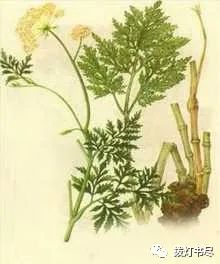
Images of Chuanxiong (20 images)
Chuanxiong is a perennial herb, growing 40-60 cm tall. The rhizome is well-developed, forming irregular, nodule-like, bulbous clumps with a strong aroma. The stem is erect, cylindrical, with longitudinal stripes, branching more at the top, while the lower stem nodes are swollen and disc-shaped (lingzi). The lower leaves are petiolate, with petiole lengths of 3-10 cm, and the base expands into a sheath; the leaf blade is ovate-triangular, 12-15 cm long and 10-15 cm wide, with 3-4 times pinnate lobes, 4-5 pairs of leaflets, ovate-lanceolate, 6-7 cm long and 5-6 cm wide, with the terminal lobes being linear-lanceolate to oblong, 2-5 mm long and 1-2 mm wide, with small pointed tips; the upper leaves gradually simplify. [1]
The compound umbel is terminal or lateral; the involucre has 3-6 linear bracts, 0.5-2.5 cm long; the rays are 7-24, unequal in length, 2-4 cm long, with rough inner sides; the small involucres are 4-8, linear, 3-5 mm long, rough; the calyx teeth are undeveloped; the petals are white, obovate to heart-shaped, 1.5-2 mm long, with small pointed tips that fold inward; the style base is conical, with 2 styles, 2-3 mm long, curving downward.
The immature fruit is flattened on both sides, 2-3 mm long and about 1 mm wide; there are 1-5 oil ducts in the dorsal grooves, 2-3 in the lateral grooves, and 6-8 in the fused surface. The flowering period is from July to August, and the immature fruit period is from September to October. [1]
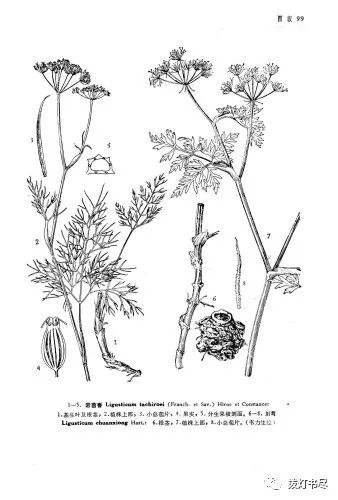 Detailed diagram of Chuanxiong
Detailed diagram of Chuanxiong
Distribution
Edit
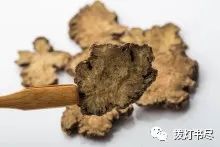
Real images of Chuanxiong (10 images)
Primarily produced in Sichuan (Peng County, now Pengzhou, with the production area having shifted), cultivated in Yunnan, Guizhou, Guangxi, Hubei, Jiangxi, Zhejiang, Jiangsu, Shaanxi, Gansu, Inner Mongolia, and Hebei provinces. [1]
Growth Environment
Edit
Chuanxiong prefers a mild climate with abundant rainfall and sufficient sunlight, thriving in a relatively humid environment. However, during the cultivation phase and storage period, it requires cooler climatic conditions. The growth period lasts 280-290 days. In flat areas, it is best to choose deep, loose, fertile, well-drained sandy loam with a rich organic matter content, neutral or slightly acidic. [2]
Propagation Methods
Edit
Chuanxiong is propagated using stem nodes (Xiong Lingzi). After the above-ground parts wither each year, the Chuanxiong is harvested, and the stem nodes on the roots are cut off, with each node having 1-2 buds. Approximately 2250 kg of seeds are used per hectare, while the larger rhizomes are processed into products. The seedlings are stored in a cellar and planted before the Jingzhe (Awakening of Insects) festival the following year, with planting furrows 12-16 cm deep, spacing of 20-25 cm * 35 cm, placing 1-2 seed pieces per hole with the bud tips facing up, covering with 6 cm of fine soil, and applying 15,000-22,500 kg of base fertilizer per hectare.
Cultivation Techniques
Edit
Site Selection and Preparation
Select cool, high mountain sunny areas or low mountain semi-shady areas with uncultivated land or clay loam. Before planting, remove all weeds, cultivate the land, and loosen the soil to a depth of 30 cm, forming beds 1.5 meters wide.
For site selection in mountainous areas for breeding materials, after clearing weeds, use local ash as base fertilizer, plow the land to a depth of about 25 cm, rake and level it, and depending on the terrain and drainage conditions, form beds 1.7-1.8 meters wide. In flat areas, the previous crop is usually early rice (the best preceding crop is green manure like sweet potato or purple vetch), after harvesting, remove the rice stubble, dig trenches to form beds about 1.6 meters wide, with trenches 33 cm wide and about 25 cm deep, loosening the topsoil into a fish-back shape. It is best to first apply compost or manure on the bed surface, mixing it with the topsoil during digging.
Planting should be done timely, preferably before or around the beginning of autumn, and not later than the end of August. Planting too early can cause seedlings to wilt due to high temperatures; planting too late can be detrimental to rhizome growth due to declining temperatures. Planting should be done on sunny days, ideally completing the planting on the same day. Before planting, remove any Chuanxiong with no buds, damaged buds, or those infested with pests, and grade the Chuanxiong by size for planting. During planting, shallow furrows are opened on the bed surface, with row spacing of 30-40 cm and a depth of about 3 cm. Then, place the Chuanxiong at an angle in the furrows, with the bud tips facing up, pressing gently to ensure they are not planted too deep or too shallow, with half exposed above the soil surface. Additionally, two Chuanxiong should be planted at each end of the rows, and every 10 rows should have an additional row of Lingzi for seedling replacement. After planting, cover the Chuanxiong nodes with a mixture of fine soil and manure or ash. Finally, cover the bed surface with a layer of straw to prevent direct sunlight and rain erosion. Approximately 30-40 kg of Chuanxiong is used per mu. [2]
Field Management
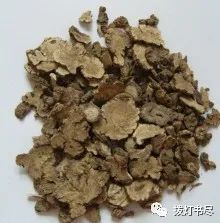
Chuanxiong (8 images)
Weeding and tilling are generally performed four times. The first time is in late August after the seedlings are established, shallowly hoeing once; after 20 days, the second weeding and tilling should be done, preferably shallowly to avoid damaging the roots; another 20 days later, the third weeding is done, during which only weeds should be removed without tilling; the fourth time is in mid to late January of the following year when the above-ground stems and leaves begin to wither, first clearing the dead stems and leaves from the field without tilling, and mounding soil around the root markers to help the rhizomes safely overwinter. This mounding is referred to by local farmers as “haodongyao” (winter medicine).
Proper fertilization is crucial in the first and second years after planting. When the above-ground stems and leaves grow vigorously, forming a certain nutritional area and producing a large amount of dry matter, nutrients can be transported to the underground rhizomes, promoting their healthy growth and development. Therefore, within two months after planting, three concentrated fertilizations are needed, which can be combined with weeding and tilling. The first fertilization per mu involves applying 1000-1500 kg of livestock manure water and 25-50 kg of decomposed cake fertilizer, diluted with three times the water and mixed evenly for hole application; the second fertilization involves 1500-2000 kg of livestock manure water and 30-50 kg of decomposed cake fertilizer, diluted with twice the water; the third fertilization involves first applying 2000-2500 kg of livestock manure water, diluted with once the water, followed by a mixture of 500 kg of cake fertilizer, ash, compost, and soil manure as dry fertilizer, applied in holes beside the plants, covered with soil. This should be done before the frost descends; if done too late, the organic fertilizer will not decompose well, resulting in low fertilizer efficiency. In January of the following year, during “haodongyao,” another round of dry manure should be applied, and after the seedlings start to green in February and March, another round of diluted livestock manure water should be applied to promote growth and increase yield. [2]
Harvesting and Processing
The optimal harvesting time is 4-5 days after the “Grain Full” solar term in the second year after planting. Generally, harvesting occurs from “Grain Full” to “Grain in Ear.” Harvesting too early results in underdeveloped underground rhizomes, leading to low yields and affecting the income of growers; harvesting too late can cause the rhizomes to rot underground, also reducing yield and directly impacting growers’ income. Harvest on sunny days, uprooting the entire plant, removing the stems and leaves, and after slightly drying the rhizomes in the field, transport them for processing.
Timely processing is essential; after harvesting, they should be dried promptly, usually using a fire kiln. The heat should not be too high, and the rhizomes should be turned once daily during drying. After 2-3 days, when a strong aroma is emitted, place them in bamboo baskets and shake to remove dirt and root hairs, resulting in the final product. The drying rate is approximately 30-35%. [2]
Pest and Disease Control
Edit
Diseases
Leaf Blight
This disease occurs mainly from May to July. When infected, brown, irregular spots appear on the leaves, which then spread to the entire leaf, causing the entire plant’s leaves to wither.
Control methods: At the initial stage of the disease, spray 65% zinc dimethyldithiocarbamate at 500 times dilution, or 50% carbendazim at 1000 times dilution, or 1:1:100 Bordeaux mixture for control. Repeat every 10 days for 3-4 times.
Powdery Mildew
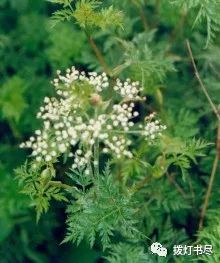 Chuanxiong
Chuanxiong
This disease starts in late June and is severe during high temperatures and humidity in July, initially affecting the lower leaves, where gray-white powder appears on the leaves and stems, gradually spreading upwards. In the later stages, black spots appear on the affected areas, and severe cases can cause the stems and leaves to turn yellow and wither.
Control methods: 1) After harvesting, clean the field and burn the remaining diseased plants and leaves; 2) At the initial stage of the disease, spray 25% powdery mildew agent at 1500 times dilution, or 50% tobramycin at 1000 times dilution every 10 days for 2-3 times.
Rhizome Rot
This disease occurs during the growth period and harvesting, causing the internal rhizomes to rot into a yellow-brown, watery state with a distinct odor, resulting in a soft rot. After being affected during the growth period, the above-ground leaves gradually turn yellow and fall off.
Control methods: 1) Immediately remove and burn diseased plants to prevent spread; 2) Ensure proper drainage, especially during the rainy season, as excessive rain and poor drainage can lead to severe outbreaks; 3) During harvesting and seed selection, remove any diseased “fu xiong” and already rotten “lingzi.”
Pests
Chuanxiong Stem Node Moth
During the lingzi growth stage, spray an 80% dichlorvos solution at 100-150 times dilution, focusing on controlling the first generation of second-instar larvae. In flat areas, use a mixture of 5:5:100 of tobacco, sycamore leaves, and water, soaking for several days before immersing the lingzi for 12-24 hours. [3]
Chemical Composition
Edit
Theoretical 1: Contains Chuanxiongzine (tetramethylpyrazine), black rye alkaloid, or contains Chuanluo (perlolyrine), which is 1-(5-hydroxymethyl-2-furyl)-9H-pyrido[3,4-b]indole, ligustilide, Chuanxiong naphthoquinone (wallichilide), 3-butylidenephthalide, 3-butylidene-7-hydroxyphthalide, butylphthalide, (3S)-3-n-butyl-4-hydroxyphthalide, 3-n-butyl-3,6,7-trihydroxy-4,5,6,7-tetrahydrophthalide, neocnidilide, senkyunolide, and various other compounds. [3]
Theoretical 2: The rhizome contains about 1% volatile oil. 40 components have been identified in the oil, accounting for 93.64%, with the main components being ligustilide (58%), 3-butylphthalide (5.29%), and sabinene (6.08%). The rhizome also contains various lactone compounds, nitrogen-containing compounds, and other chemical constituents. [3]
Identification
Edit
Physical Identification
The rhizome is irregularly nodule-shaped, bulbous, with a diameter of 1.5-7 cm. The surface is yellow-brown to yellow-brown, rough and wrinkled, with many parallel raised nodes; the top has a round, depressed stem scar, and the underside and nodes have many small, tuberous root scars. The texture is solid and not easily broken, with a yellow-white or gray-yellow cross-section, featuring wavy ring patterns, and scattered yellow-brown oil spots throughout. The aroma is strong and distinctive, with a bitter, pungent taste and a slight sweetness, causing a tingling sensation on the tongue. The best quality is characterized by large, plump, solid texture, yellow-white cross-section, high oil content, and strong aroma.
Microscopic Identification
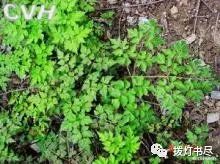 Chuanxiong
Chuanxiong
Cross-section of the rhizome: The cork layer consists of more than 10 rows of cork cells. The cortex is narrow. The phloem is broad, with scattered vascular bundles. The cambium forms wavy or irregular polygons. The xylem is irregularly polygonal. The xylem vessels are mostly polygonal or circular, mostly single or arranged in a “V” shape, with occasional xylem fiber bundles. The pith is relatively large. The parenchyma contains numerous oil chambers, which are round, oval, or irregular, light brown, with smaller oil chambers near the cambium. The parenchyma cells are rich in starch granules, some containing calcium oxalate crystals.
Powder characteristics: Light yellow-brown or gray-brown.
1. Starch granules are oval, elongated, round, oval, or kidney-shaped, with diameters of 5-16 μm. The length is about 21 μm, with hilum points being dot-like, long-slit, or herringbone; compound granules consist of 2-4 granules.
2. Calcium oxalate crystals appear as round clusters or circular aggregates, with diameters of 10-25 μm.
3. Cork cells are deep yellow-brown, often multilayered, with a polygonal appearance and thin walls.
4. Oil chambers are often fragmented, and secretory cells contain many oil droplets.
5. Vessels are mostly spiral vessels, with some thick-walled spiral vessels interconnected, forming net-like spiral vessels. There are also reticulate, ladder-like, and bordered pit vessels, with diameters of 14-50 μm.
Chemical Identification
1. Take 1 gram of powder, add petroleum ether (30-60°C) in a suitable amount, let it sit for 10 hours, shaking occasionally, then let it settle, take 1 ml of the supernatant, evaporate, and dissolve the residue in 1 ml of methanol. Add 2-3 drops of 2% 3,5-dinitrobenzoic acid methanol solution and 2 drops of saturated potassium hydroxide methanol solution, which will show a red-purple color (to check for unsaturated lactones).
2. Take 0.5 grams of powder, add ether in a suitable amount, and cold soak for 1 hour, then filter. Concentrate the filtrate to 1 ml, add 2-3 drops of 7% hydroxylamine hydrochloride methanol solution, and 3 drops of 20% potassium hydroxide methanol solution, heat slightly in a water bath, cool, adjust the pH to 3-4 with dilute hydrochloric acid, and then add 1-2 drops of 1% ferric chloride methanol solution, which will show a purple-red color at the interface of the ether layer (to check for coumarins and lactones).
3. Take 0.5 grams of powder, add 10 ml of water, cold soak overnight, filter. Add 1% hydrochloric acid to make it acidic, take 1 ml of the filtrate and divide it into three parts, adding bismuth iodide, potassium iodide, and silica to each, producing orange-red, white, or white precipitates respectively.
4. Place cross-sections under ultraviolet light to observe bright light purple fluorescence, with the outer skin showing dark brown fluorescence.
5. Thin-layer chromatography: Take 2 grams of powder, add 6 ml of ether, cold soak for 4 hours, filter. Dissolve the filtrate in 1 ml of chloroform to prepare the test solution. Take Chuanxiongzine as a control. Apply samples of both solutions on the same aluminum oxide thin-layer plate, using petroleum ether-chloroform (1:1) as the developing agent, and develop, dry, and examine under ultraviolet light (365 nm). The test solution should show the same orange-yellow spots at the corresponding positions as the control solution.
6. Take 1 gram of powder, add 5 ml of petroleum ether (30-60°C), let it sit for 10 hours, shaking occasionally, then let it settle, take 1 ml of the supernatant, evaporate, and dissolve the residue in 1 ml of methanol. Add 2-3 drops of 2% 3,5-dinitrobenzoic acid methanol solution and 2 drops of saturated potassium hydroxide methanol solution, which will show a red-purple color.
7. Take 1 gram of powder, add 20 ml of ether, heat and reflux for 1 hour, filter, evaporate the filtrate, and dissolve the residue in 2 ml of ethyl acetate to prepare the test solution. Take 1 gram of Chuanxiong as a control and prepare the control solution in the same manner. Perform thin-layer chromatography (Appendix VI B) test, taking 1-2 microliters of each solution and applying them on the same silica gel G thin-layer plate, using n-hexane-ethyl acetate (9:1) as the developing agent, developing, drying, and examining under ultraviolet light (365 nm). The test solution should show the same colored fluorescent spots at the corresponding positions as the control solution. [3]
Main Value
Edit
Medicinal Value
Pharmacology
Toxicity: The LD50 of Chuanxiongzine by intravenous injection in mice is 239 mg/kg. The LD50 of the water-soluble crude preparation of Chuanxiong administered intraperitoneally and intramuscularly in mice is 65.86 and 66.42 g/kg, respectively. The LD50 of Chuanxiongzine in mice by intravenous administration is 239 mg/kg. Mice given 5 or 10 mg/kg of Chuanxiongzine daily for 4 weeks showed no significant abnormalities in body weight, blood parameters, liver, kidney function, or pathological histology.
Pharmacological Effects
1. Effects on the Central Nervous System: Chuanxiong has a significant sedative effect. When the volatile oil of Chuanxiong is present in small amounts, it inhibits brain activity in animals, while it excites the medullary respiratory center, vascular motor center, and spinal reflex center. The decoction of Chuanxiong administered to both large and small mice can inhibit their spontaneous activity, prolonging sleep time induced by pentobarbital sodium, and can counteract the stimulating effects of caffeine (20 mg/kg). However, it cannot counteract seizures induced by pentylene tetrazole. Administering Chuanxiong decoction at 25-50 g/kg can inhibit spontaneous activity in rats, with a more pronounced sedative effect in mice; it can also prolong sleep time induced by pentobarbital but cannot counteract the stimulating effects of caffeine or prevent seizures or lethal effects caused by pentylene tetrazole or cocaine. The volatile oil from Japanese Chuanxiong has an inhibitory effect on brain activity in animals, while it excites the medullary vascular motor center, respiratory center, and spinal reflex; with increased dosage, all effects turn to inhibition.
2. Effects on the Cardiovascular System: 2.1 Effects on the Heart: The Chuanxiong decoction at concentrations of 10-5 to 10-4 increases the contraction amplitude and slightly slows the heart rate in isolated frog and toad hearts.
3. Effects on Smooth Muscle: A 10% aqueous solution of Chuanxiong extract can stimulate the pregnant rabbit’s isolated uterus in small amounts, increasing tension and enhancing contractions, eventually leading to spasms; in large amounts, it can paralyze the uterus and stop contractions. The alkaloids in Chuanxiong, ferulic acid, and ligustilide all have antispasmodic effects, with ligustilide being the main component responsible for this action. Chuanxiong administered at 300 mg/kg shows significant analgesic effects, with a comparison showing P<0.001.
4. Antibacterial Effects: In vitro tests show that Chuanxiong inhibits Escherichia coli, Shigella (Sonnei), Proteus, Pseudomonas aeruginosa, Salmonella, paratyphoid bacteria, and Vibrio cholerae. The water extract of Chuanxiong (1:3) also shows inhibitory effects on certain pathogenic skin fungi.
5. Radioprotective Effects: The Chuanxiong decoction has certain therapeutic effects on experimental radiation sickness in animals. The water-soluble crude preparation of Chuanxiong provides protective effects against radiation damage and nitrogen mustard injury in rats, mice, and dogs. The radioprotective effect of Chuanxiong is better in rats than in mice, with intraperitoneal administration being more effective than intramuscular, and intramuscular being more effective than oral administration.
6. Other Effects: Chuanxiongzine can increase renal blood flow in anesthetized rabbits and has diuretic effects. Chuanxiongzine can inhibit DNA synthesis, suggesting it can suppress protein and antibody production. Chuanxiong has certain effects against vitamin E deficiency, protecting chicks from nutritional encephalopathy caused by vitamin E deficiency. Sodium ferulate can reduce lipid peroxidation reactions caused by H2O2 and O2, showing protective effects against hemolysis caused by OH and malondialdehyde (MDA). Sodium ferulate can significantly reduce complement hemolysis and inhibit the binding of complement 3b (C36) to red blood cell membranes. Chuanxiongzine has an inhibitory effect on the occurrence of pulmonary fibrosis induced by bleomycin in mice. [3]
Taste and Properties
Pungent, warm.
1) Shennong Bencao Jing: Pungent, warm.
2) Wupuz Bencao: Huangdi, Qibo, and Leigong: Pungent, non-toxic, aromatic. Bian Que: Sour, non-toxic. Li’s: Raw is warm, cooked is cold.
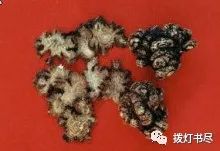 Chuanxiong
Chuanxiong
3) Tang Bencao: Bitter and pungent.
4) Bencao Zheng: Pungent, slightly sweet, aromatic. [4]
Meridian Entry
Enters the liver and gallbladder meridians.
1) Tangye Bencao: Enters the hand and foot Jueyin and Shaoyang meridians.
2) Yaopin Huayi: Enters the liver, spleen, and Sanjiao meridians.
Functions and Indications
Promotes qi, alleviates depression, dispels wind, eliminates dampness, invigorates blood, and alleviates pain. Used for wind-cold headaches, dizziness, flank pain, abdominal pain, cold bi syndrome, menstrual disorders, difficult labor, postpartum stasis, and pain from abscesses and sores. Indicated for irregular menstruation, dysmenorrhea, amenorrhea, abdominal pain, chest and flank pain, trauma swelling and pain, headaches, and rheumatic pain.
1) Bencao Jing: Treats wind stroke entering the brain, headaches, cold bi syndrome, muscle spasms, traumatic injuries, and women’s blood stasis leading to infertility.
2) Bielu: Eliminates cold movement in the brain, dispels wind from the face, reduces excessive tears and saliva, and alleviates sudden cold sensations, abdominal pain, and acute swelling and pain in the flanks.
3) Tao Hongjing: For bleeding from the gums, hold it in the mouth for healing.
4) Yaoxing Lun: Treats weakness in the waist and legs, hemiplegia, and retained placenta, and alleviates internal cold pain.
5) Rihua Zibencao: Treats all types of wind, qi, and blood issues, nourishes the five organs, strengthens muscles and bones, regulates various pulses, breaks up blood stasis, nourishes new blood, promotes flesh growth, and alleviates nasal bleeding, hemoptysis, and blood in urine, as well as treating hemorrhoids, abscesses, and pus discharge.
6) Yixue Qiyuan: Nourishes blood and treats blood deficiency headaches.
7) Wang Haogu: Searches for liver qi, nourishes liver blood, moistens liver dryness, and supplements wind deficiency.
8) Gangmu: Dries dampness, stops diarrhea, and promotes qi and alleviates depression. [4]
Dosage and Administration
For internal use: decoction, 1-2 qian; or in pills or powders; for external use: ground into powder for sprinkling or mixed for application.
Precautions
Contraindicated for individuals with yin deficiency and excess fire, those with excess above and deficiency below, and those with weak qi.
1) Bencao Jing Jizhu: Avoid with Bai Zhi. Antagonistic to Huang Lian.
2) Pinhui Jingyao: Prolonged use may disperse true qi.
3) Bencao Mengquan: Avoid with Huang Qi, Shan Zhu, and Wolf Poison. Avoid with Nitrate and Talc, and antagonistic to Li Lu.
4) Bencao Jingshu: For patients with excess above and deficiency below, yin fire flaring up, vomiting, coughing, spontaneous sweating, easy sweating, night sweats, dry throat, fever, thirst, and irritability, all should be avoided.
5) Bencao Congxin: Not suitable for qi rising phlegm and asthma.
6) Depei Bencao: Contraindicated for severe internal fullness, spleen deficiency with little food intake, and fire-accumulated headaches.
Additional Formulas
1) For treating various wind attacks, heavy head and eyes, nasal congestion, and body aches: 8 liang of mint leaves (not heated), 4 liang each of Chuanxiong and Jingjie (stems removed), 8 liang of Cyperus (fried), 1.5 liang of Fangfeng (stems removed), 2 liang each of Bai Zhi, Qiang Huo, and Gan Cao (fried); grind all into fine powder, take 1 qian after meals with tea. (Chuanxiong Tea Powder) [4]
2) For treating migraines: finely chop Jingxiong, soak in wine for consumption. (Doumen Fang) [4]
3) For treating dizziness and headaches due to wind-cold: 1 jin of Chuanxiong and 4 liang of Tianma. Grind into powder, mix with honey to form pills, 10 pills per dose, chew well and take with tea or wine after meals. (Chuanxiong Pills) [4]
4) For treating wind-heat headaches: 1 qian of Chuanxiong and 2 qian of tea leaves. Boil with 1 cup of water for 5 minutes, take hot before meals. (Simple Prescription) [4]
5) For treating abdominal pain during pregnancy (placental obstruction): 2 liang of Chuanxiong, 2 liang of Ejiao, 2 liang of Gan Cao, 3 liang of Ai Ye, 3 liang of Dang Gui, 4 liang of Shao Yao, and 6 liang of Di Huang. Combine the seven ingredients with 5 liters of water and 3 liters of clear wine, boil down to 3 liters, remove the residue, and dissolve the gelatin completely. Take 1 liter warm, three times a day until healed. [4]
6) For treating abdominal pain after childbirth: 1 liang of Dang Gui, 5 qian of Chuanxiong, and 2 qian of Jingjie (fried black). Boil in water. [4]
7) For treating postpartum pain: 8 qian of Dang Gui, 3 qian of Chuanxiong, 14 pieces of peach kernels (peeled, tips removed, and fried), 5 fen of black ginger, and 5 fen of fried licorice. Boil with yellow wine and children’s urine in equal parts. [4]
8) For treating children’s brain heat, favoring closed eyes, and sun pain or red, swollen eyes: 2 qian each of Chuanxiong, mint, and Puxiao, ground into powder and blown into the nose. [4]
Clinical Applications
For treating angina: Take equal parts of Chuanxiong and safflower, make into tablets (each containing 5 qian of each herb), take 4 tablets, three times a day. A treatment course lasts 4-6 weeks. In a study of 84 cases (including 10 cases that added Pueraria flavonoid tablets at 20 mg three times a day; 2 cases started adding Myrrh tablets after 2 weeks), results showed significant effects in 9 cases, improvement in 57 cases, basic ineffectiveness in 17 cases, and worsening in 1 case. Observations indicated no significant relationship between the severity of the condition and efficacy; those taking Pueraria flavonoids and Myrrh tablets did not see improved efficacy; the medication had little effect on blood lipid levels. Among 60 patients who had been taking nitroglycerin, 20 stopped during treatment, and 15 reduced their dosage, with some cases showing improvements in ECG readings. [4]
Medicinal Use
Pharmacopoeia: The rhizome treats headaches, chest and flank pain, dysmenorrhea, abdominal pain, rheumatic pain, and trauma. Xianglan Kao: The rhizome treats menstrual pain, irregular menstruation, amenorrhea, abdominal pain, chest and rib distension, wind-cold damp bi syndrome, coronary heart disease, angina, dizziness, convulsions, and hemiplegia. Nujing Yao: The rhizome treats abdominal pain, distension, and children’s abdominal issues, as well as rheumatic pain. Mongolian Medicine: The rhizome is used for headaches, chest and rib pain, dysmenorrhea, abdominal pain, rheumatic pain, trauma, coronary heart disease, angina, and colds. Jingpo Medicine: The rhizome treats irregular menstruation, dysmenorrhea, abdominal pain, angina, and rheumatic pain. Achang Medicine: Chuanxiong has the same functions as the Jingpo tribe. Deang Medicine: The functions are the same as those of the Jingpo tribe. Dong Medicine: The rhizome treats irregular menstruation and unknown swellings. [5]
Dietary Value
Dietary Effects
Chuanxiong is pungent, warm, and enters the liver, gallbladder, and heart meridians, promoting qi and dispersing.
It has the effects of invigorating blood circulation, promoting qi flow, dispelling wind, and alleviating pain.
Indicated for irregular menstruation, dysmenorrhea, amenorrhea, difficult labor, retained placenta, postpartum abdominal pain, swelling, chest and flank pain, trauma swelling and pain, headaches, dizziness, and numbness due to wind-cold damp bi syndrome.
Food Interactions
Chuanxiong is antagonistic to Shan Zhu and Wolf Poison, and should be avoided with Nitrate, Talc, and Huang Lian, and is antagonistic to Li Lu.
Preparation Guidance
1. For menstrual disorders, dysmenorrhea, amenorrhea, difficult labor, and postpartum abdominal pain due to blood stasis, it can be combined with Shudi (or Shengdi), Baishao (Chi Shao), and Danggui to form a basic formula, then adjusted according to the condition.
2. For wind-cold headaches, it can be combined with Jingjie, Fangfeng, Xixin, and Baizhi.
Suitable and Unsuitable Populations
In terms of diet and population, patients with wind-cold headaches, wind-heat headaches, migraines, and vascular headaches are suitable for consumption. However, patients with hypertensive headaches, brain tumor headaches, and liver fire headaches, as well as those with yin deficiency and excess fire, should avoid consumption.
Plant Culture
Edit
Historical Legends
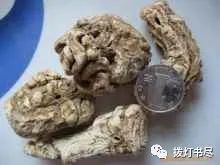
Chuanxiong (5 images)
In the early Tang Dynasty, the “Medicine King” Sun Simiao traveled with his disciples to Qingcheng Mountain in Sichuan, braving the wilderness to collect medicinal materials. One day, the master and disciples grew tired and rested in a dense pine forest. Suddenly, they saw a large female crane playing with several chicks. The Medicine King was captivated, but suddenly heard the chicks cry out, and saw the female crane with its neck lowered, trembling, and continuously mourning. The Medicine King immediately understood that the crane was suffering from a serious illness.
The next morning, at dawn, the Medicine King and his disciples returned to the pine forest. Not far from the crane’s nest, the sounds of the sick crane were clearly audible. After another day, when they returned to the pine forest, the sick crane was no longer heard. Looking up, several white cranes soared in the sky, dropping a small white flower and several leaves that resembled carrot leaves. The Medicine King instructed his disciple to collect and preserve them.
Days passed, and the female crane fully recovered, leading the chicks to play as usual. The Medicine King observed that the white cranes loved to visit the ancient caves in the dense forest, where a patch of green grew, with flowers and leaves resembling those that had fallen from the crane’s beak. The Medicine King instinctively connected the crane’s recovery with this plant. After experimentation, he found that this plant had the effects of invigorating blood circulation, promoting menstruation, and dispelling wind and alleviating pain, so he instructed his disciple to take this medicine down the mountain to treat patients, which proved effective. The Medicine King excitedly recited: “Qingcheng is the most secluded in the world, the first cave in western Sichuan. Where the immortal cranes pass, good medicine descends from the heavens. This medicine shall be called Chuanxiong!” Thus, it was named.
Species Protection
Edit
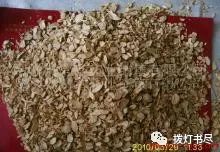
Chuanxiong (7 images)
According to the “Regulations on the Protection of Geographical Indication Products,” the General Administration of Quality Supervision, Inspection and Quarantine organized the review of the application for the geographical indication product protection of Chuanxiong. After passing the review, it was approved to implement geographical indication product protection for Chuanxiong starting from September 4, 2006.
Protection Scope
The geographical indication product protection scope for Chuanxiong is based on the range proposed by the People’s Government of Dujiangyan City, Sichuan Province, in the letter regarding the application for national geographical indication product protection (Du Fu Han [2005] No. 139), covering the administrative area currently under the jurisdiction of Dujiangyan City, Sichuan Province.
Geographical Indication Usage
Producers within the geographical indication product protection scope of Chuanxiong can apply to the Quality and Technical Supervision Bureau of Dujiangyan City, Sichuan Province, for the use of the “Geographical Indication Product Special Mark,” which will be approved by the General Administration of Quality Supervision, Inspection and Quarantine.

